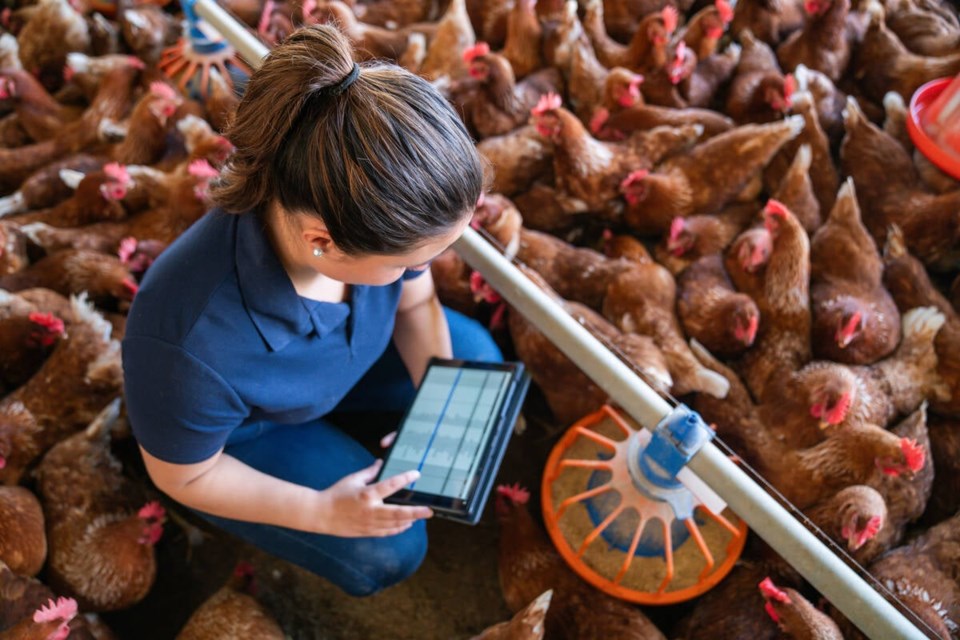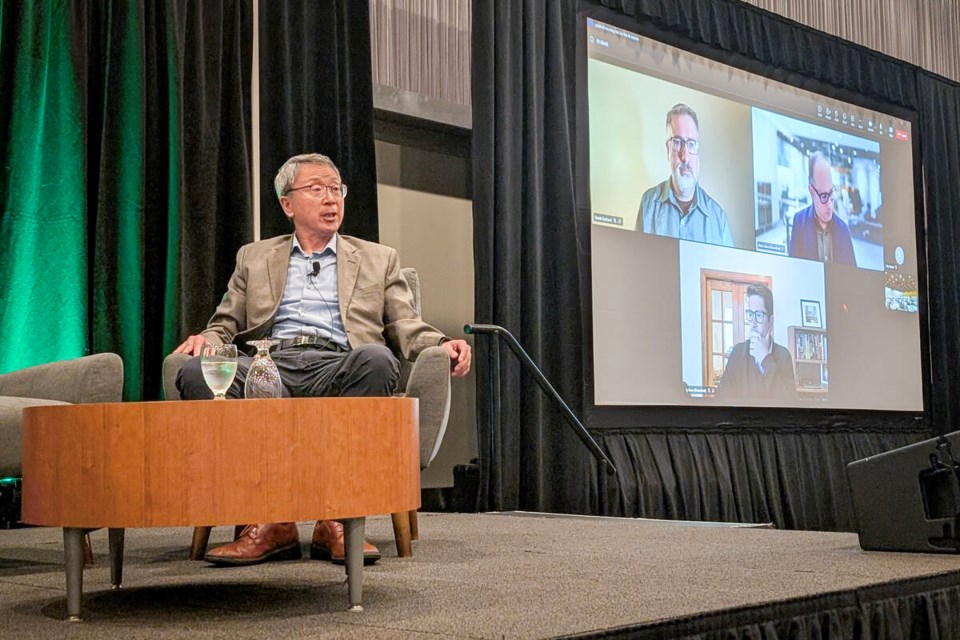MANITOBA CO-OPERATOR — If cocoa was in short supply, could the taste of chocolate be reproduced from other ingredients?
The answer is apparently yes, with the help of artificial intelligence.
The chocolate-free chocolate bar was made with the input of AI platform Giuseppe, developed by NotCo — a company best known for its plant-based protein alternatives mimicking animal products.
According to the company, the confection was created “using residual ingredients from other industries and innovative ingredients” in a precision fermentation process.

The client company that tapped Guiseppe for the work, which wasn’t named, was driven by sustainability concerns and issues facing the cocoa industry.
West African cocoa production has faced two successive below-average harvests and is likely to see another 10 per cent decline in the upcoming 2025-26 season, Reuters reported on July 9.
Customizing food with AI
Chocolate without chocolate was one example of emerging food technology given by a panel of industry experts at the Manitoba Sustainable Protein Research Symposium in Winnipeg, July 7.
It’s still relatively early days for artificial intelligence, panellists said, but it’s already being used in novel ways throughout the agri-food system and is likely to have transformative effects in the future.
“In 2024 alone there were 58 new products that were introduced with an AI positioning or claim, and we’re already at 27 for the year,” said Ty Kane of Innova Insights, a market analysis firm.
Personalized nutrition is a big driver of new products, said Kane. AI presents the opportunity to tailor food products like alternative proteins to align with individual health goals, cultural preferences and allergies.
AI can also help tailor animal nutrition.
In aquaculture, AI can be used to analyze nutritional information and parameters to make recommendations on feed formulation, said Dominique Bureau.
Bureau is a researcher at the University of Guelph and co-founded Wittaya Aqua, which provides management software to aquaculture companies.
The large number of available aquaculture feed ingredients and parameters makes it challenging to create a complete data set on each ingredient, Bureau said. Not every scientific study will analyze all attributes of an ingredient, for example.
“That’s where artificial intelligence can be very useful because you can basically pull all the information from similar ingredients and come up with some recommendations or calculations on how to estimate this,” he said.
Ingredients also come at different costs and have different values. For instance, the industry may be willing to pay more for products that have less environmental impacts or have certain functional properties.
AI “allowed us to estimate the cost of the value of nutrients, but also the value of attributes,” Bureau said. “I imagine that in the food industry, similar approaches are being developed and should be adopted.”
AI in agriculture
Artificial intelligence will help make livestock production more efficient, said Qiang Zhang, a professor of biosystems engineering at the University of Manitoba.
In swine production, for example, farmers have to deal with environmental controls, nutrition and animal body condition, markets and feed costs — all of which contribute to overall profitability.
“It’s difficult for individual farmers to track everything,” Zhang said. “With AI, we can actually put all the information together, so not just looking at the growth of my pigs … I can grab the market information and the prediction of the market in the future.”
AI could then give advice on the most efficient feeding strategy, the Manitoba researcher used as an example.
Environmental sustainability is also likely to be a major driver of AI use, said Mark Juhasz, a senior manager of agri-food business development with MNP.
“I think that will tie into a really hyper precise agriculture that will be very resource efficient and intensified,” he said.
He also predicted an increased use of controlled environment agriculture.
AI in supply chain management
Recent years have seen agriculture and food supply chains disrupted by COVID-19, war, bird flu and trade disputes. These have led to research and conversations about technologies that can help Canada produce more products domestically, said Juhasz.

Qiang Zhang, a professor of biosystems engineering at the University of Manitoba, speaks a the Manitoba Sustainable Protein Research Symposium in Winnipeg on July 7, 2025. | Photo by Geralyn Wichers
Many companies are working to integrate AI into food production and distribution to make those systems more resilient and responsive, he said.
He cited ToolsGroup, a global supply chain planning software company that can forecast demand for specific grocery products and can be responsive to changes in consumer behavior and demand as costs or conditions change.
Another platform, called Tastewise, analyzes market trends, social media sentiment and seasonal patterns to give food and beverage makers demand predictions. It can also help companies decide how to modify products, such as changing ingredients or price point, to offset production costs and risks, attendees heard.
Tastewise’s website lists KraftHeinz, PepsiCo and Campbell’s among its clients.
Data use issues
Artificial intelligence, however, requires a lot of data.
“Data really is the lifeblood of these technologies,” said University of Manitoba computer science professor David Gerhard.
Current public-facing AI platforms are built on terabytes upon terabytes of data gathered from all over the web, he said. The more data they have, the better the artificial intelligence.
However, with many of these programs, when a user inputs data — such as which crops they intend to plant next year — that data may then belong to the company that made the program.
In the context of personalized nutrition, “I’m going to have to give a lot of my personal information,” Gerhard said.
Juhasz later raised the possibility of AI tracking people’s individual microbiome and biochemistry to better personalize nutrition.
“I’m not going to do that if I think that data will then go into the sieve of the big (AI) model and then other people are going to make use of it in some other way,” Gerhard said.
Organizations are starting to crop up to develop governance structures to ensure data is handled appropriately so people trust the models. However, fragmentation of rules across sectors could make it hard for individuals to keep the rules straight, panellists warned.
In the sphere of personalized nutrition, data quality and how quality is assessed may also be an issue, Juhasz said. He questioned how that would be co-ordinated between doctors, public health officials and the wider health and wellness sector.
About the author
Related Coverage
Manitoba signs trade deals with four provinces to reduce barriers
Federal and provincial governments fund $6M for Manitoba food processors
Governments offer swift aid to Manitoba livestock producers
A place of national honour for former deputy ag minister, Dori Gingera-Beauchemin
Ag equipment brands ink deals with Starlink for machine connectivity

